Apple has released the betas for its next major operating systems to the public today, making it relatively easy for adventurous users to download and install rough versions of the software that will begin powering Macs, iPhones, iPads, and other devices starting sometime in the fall.
We'll publish full reviews of those new OSes when they're officially released, but for Mac users who want to jump into the public betas today, we'll be covering a few macOS Ventura features we've learned about in our time with the developer betas (the first public beta build corresponds roughly to the third developer beta build, which was released last week).
Rather than focus on high-profile changes, like Continuity Camera, search improvements, Passkeys, or the overhauled Settings app, we've focused on smaller but still significant improvements, including a few that show us where Apple is trying to steer the Mac in the next few years.
The public betas for iOS 16, iPadOS 16, macOS Ventura, and other updates can be installed on supported hardware using Apple's documentation here. As when installing any beta software, proceed with caution—make sure you have recent backups of your important files and consider using test hardware rather than installing the betas on systems that you rely on day to day.
More rapid, seamless security updates
Apple's long list of Ventura features is called Rapid Security Response, and it's pitched as a way for Apple to provide smaller, more timely updates to macOS that don't require a system restart. But what does this mean, exactly?
To install updates like this, Ventura makes some additions to the Signed System Volume (SSV) security feature from Big Sur. To recap, the SSV encompasses almost all of the macOS system files, and your Mac is only allowed to boot and run if the volume's signature indicates that nothing on the SSV has been modified or tampered with in any way. When updates are installed, the SSV is mounted in the background, files are patched, a new cryptographic signature is created for verification next time your system boots, and a snapshot of that newly signed volume is created for use next time the computer boots.
To allow for some smaller updates to be installed without a reboot, Ventura uses separate "cryptex" disk images for some apps and operating system files. As described by anonymous Twitter firmware engineer @never_released, cryptex images are treated by macOS as extensions of an existing volume. These images can be opened and modified independently of the SSV, but to macOS and most of its apps, they will appear to be part of the system volume, same as any other system file.
Ventura will be able to patch apps and other system files located in these cryptex images without needing to touch the SSV, including Safari, WebKit and JavaScript-related frameworks, and others. This will remove the need for a lengthy install process and reboot while still retaining the security benefits of the SSV for most system files. Whether this actually leads to faster or more frequent security patches remains to be seen. More wide-ranging updates, including (presumably) major updates like 13.1 or 13.2, will most likely continue to use the current reboot-required approach.
Beyond the System Settings app
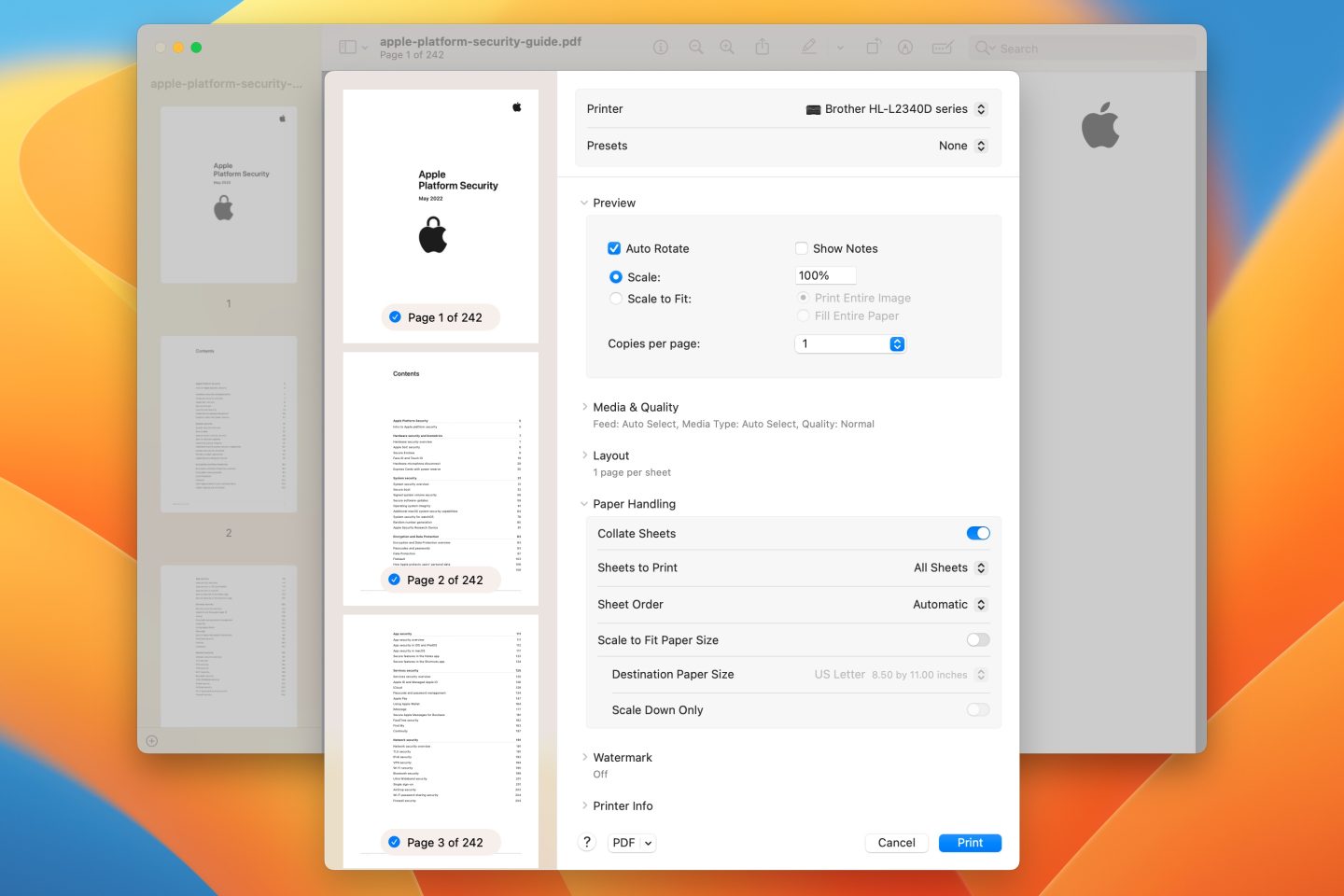
A redesigned Print dialog adds a new continuously scrolling preview column on the left, and changes the time-consuming drop-down menu into one continuously scrolling sheet of settings with expandable subsections.
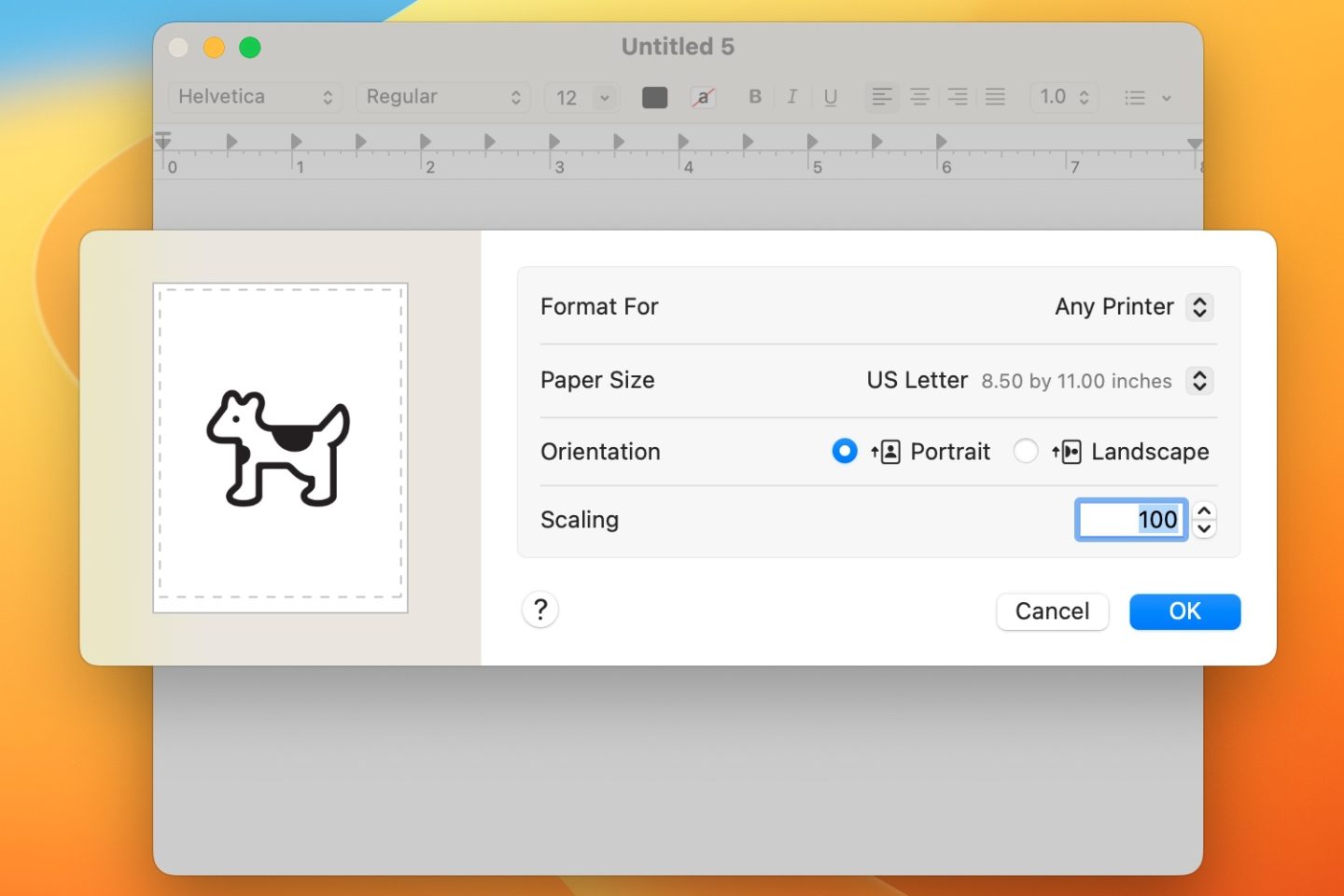
Clarus the Dogcow makes its triumphant return to the Page Setup menu, for the apps that still have one.
The Mac's new System Settings app completely replaces the old System Preferences app, and it's probably the biggest single change the app has gotten since the dawn of Mac OS X. But the work on longstanding bits of system UI doesn't stop there.
For example, Ventura also totally redesigns the macOS Print dialog, dispensing with the multi-section drop-down menu in favor of one long page with multiple expandable sections, plus a new independently scrollable continuous preview column on the left. Apps with a Page Setup option will also reveal the presence of an old friend, a smooth high-res version of Clarus the Dogcow. This hearkens all the way back to the old LaserWriter days, when Clarus served a similar purpose.
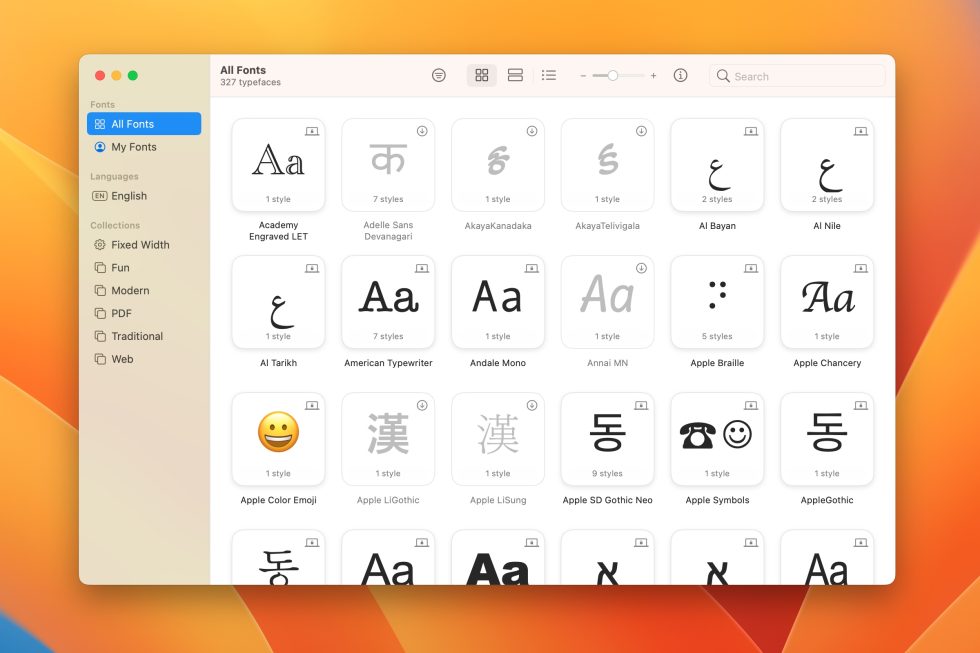
Ventura additionally ushers in the biggest redesign for Font Book since it was introduced back in macOS 10.3, switching from a multi-column design that only previews a single font at a time to a more visually oriented grid of fonts that provide smaller previews of dozens of fonts at a time.
Sadly, Apple hasn't decided to re-think all of its old built-in macOS apps. If you were hoping for an overhaul to TextEdit or Chess this year, you'll have to keep waiting.
Forehead-slapping imports from iOS
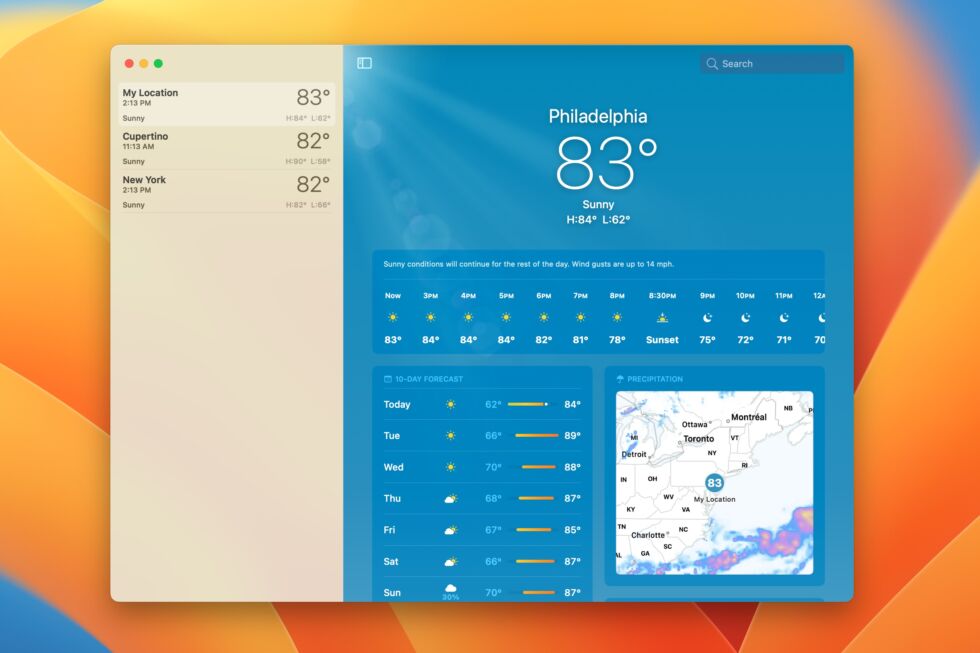
For all the tight integration between Apple's various hardware and software platforms, there are still a few places where one platform doesn't offer a feature that other platforms support. I sometimes think of these as "iPad Calculator" problems—as in, "why is there no Calculator app on the iPad?"
Ventura solves a fair few of these, partly because Catalyst and SwiftUI have made it easier for Apple to write one app that can work on all its platforms. Case in point, the new Clock app is a mostly direct port of the iPadOS version of the same app, and iPadOS 16's new big-screened version of the Weather app is coming to Ventura, too. (I especially like Weather, since it's a much faster, cleaner alternative to heading to the Weather Channel's own website and enduring multiple pesky messages about cookies, ad blocking, and location access.)
The features of these apps generally mirror the features they have on the iPad, including (finally) the ability to set timers with Siri on macOS and severe weather and precipitation notifications from the Weather app.
New features for gamers and streamers
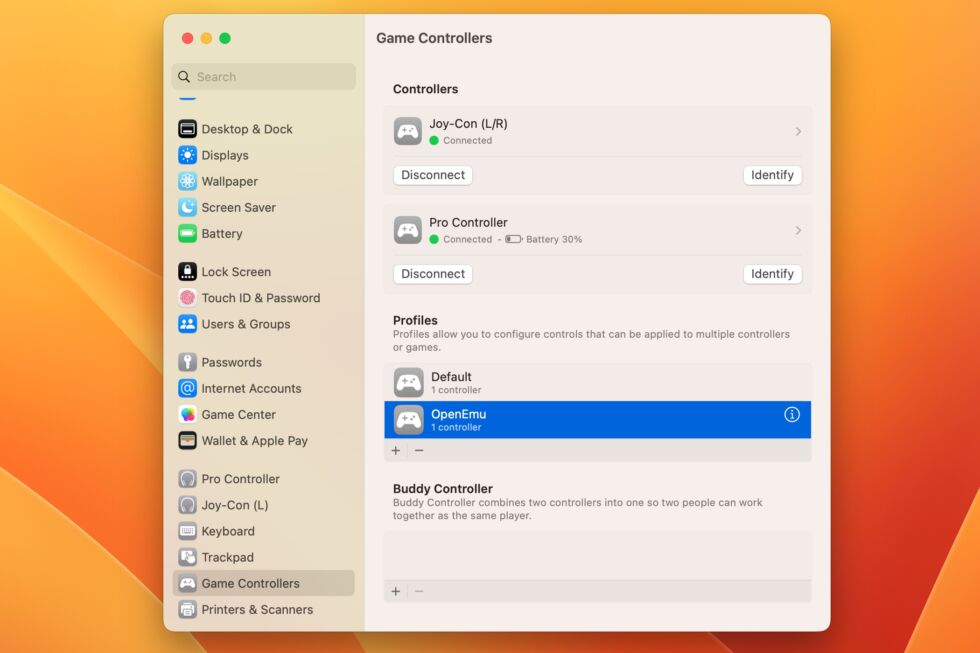
The Mac has never been a gaming platform in the way that Windows is. But Apple Silicon Macs offer respectable graphics performance across the board, and Ventura makes changes on the software side that could make the Mac somewhat more appealing for gaming.
Metal 3 makes a few changes to Apple's proprietary low-overhead graphics API, but the most appealing is MetalFX, an upscaling technology along the lines of Nvidia's DLSS, AMD's FSR, or Intel's upcoming XeSS. These kinds of upscaling algorithms are helpful for midrange and low-end GPUs, since they can upscale lower-resolution images without requiring lots of extra GPU power, making it possible to get closer to high-end GPU image quality without actually needing a high-end GPU.
But there are less-flashy additions as well. Ventura will add support for Nintendo's Switch Pro controllers and Joy-Cons, complementing its already surprisingly robust built-in support for Xbox and PlayStation gamepads. Apple has also added built-in support for steering wheel accessories, plus an all new section of the System Settings app devoted to changing button mappings, loading or changing different controller profiles, and setting up a "Buddy Controller" feature that can allow two separate gamepads to control the same character (helpful for assisting a less-experienced player through a tough level, or allowing people to use their preferred gamepad for pass-the-controller multiplayer of a single-player game).
Another lower-key feature is called ScreenCaptureKit, which was technically added to Monterey Macs in the 12.3 update but was highlighted anew during WWDC sessions this year. This framework allows for high-framerate streaming of the entire macOS desktop, individual app windows, or all windows of an individual app. This kind of framework could just be targeted at humdrum video app screen sharing via Zoom or WebEx, but Apple made some of its own code commits to the Open Broadcaster Software package to allow OBS to support the feature more quickly and completely, a move that seems aimed squarely at streamers and gamers.
Adding more gaming-friendly features doesn't automatically mean game developers will begin paying more attention to macOS. It remains, after all, a relatively small platform compared to Windows, and much of the install base (particularly those on older Intel MacBook Airs, Mac minis, and 13-inch MacBook Pros) won't have anywhere near the GPU performance needed to run high-end modern titles. Apple has said that No Man's Sky, Resident Evil Village, and Grid Legends are all coming to the Mac as part of the company's Metal 3 and Ventura push, but those could be one-off releases rather than the start of a trend.
Listing image by Andrew Cunningham


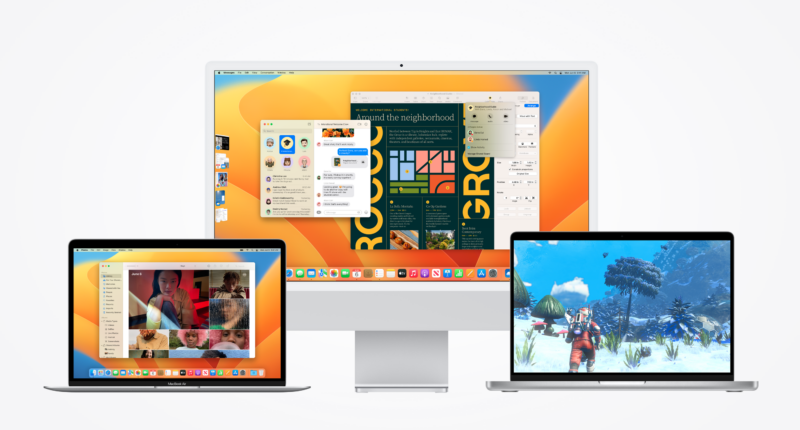
3175x175(CURRENT).thumb.jpg.b05acc060982b36f5891ba728e6d953c.jpg)
Recommended Comments
There are no comments to display.
Join the conversation
You can post now and register later. If you have an account, sign in now to post with your account.
Note: Your post will require moderator approval before it will be visible.